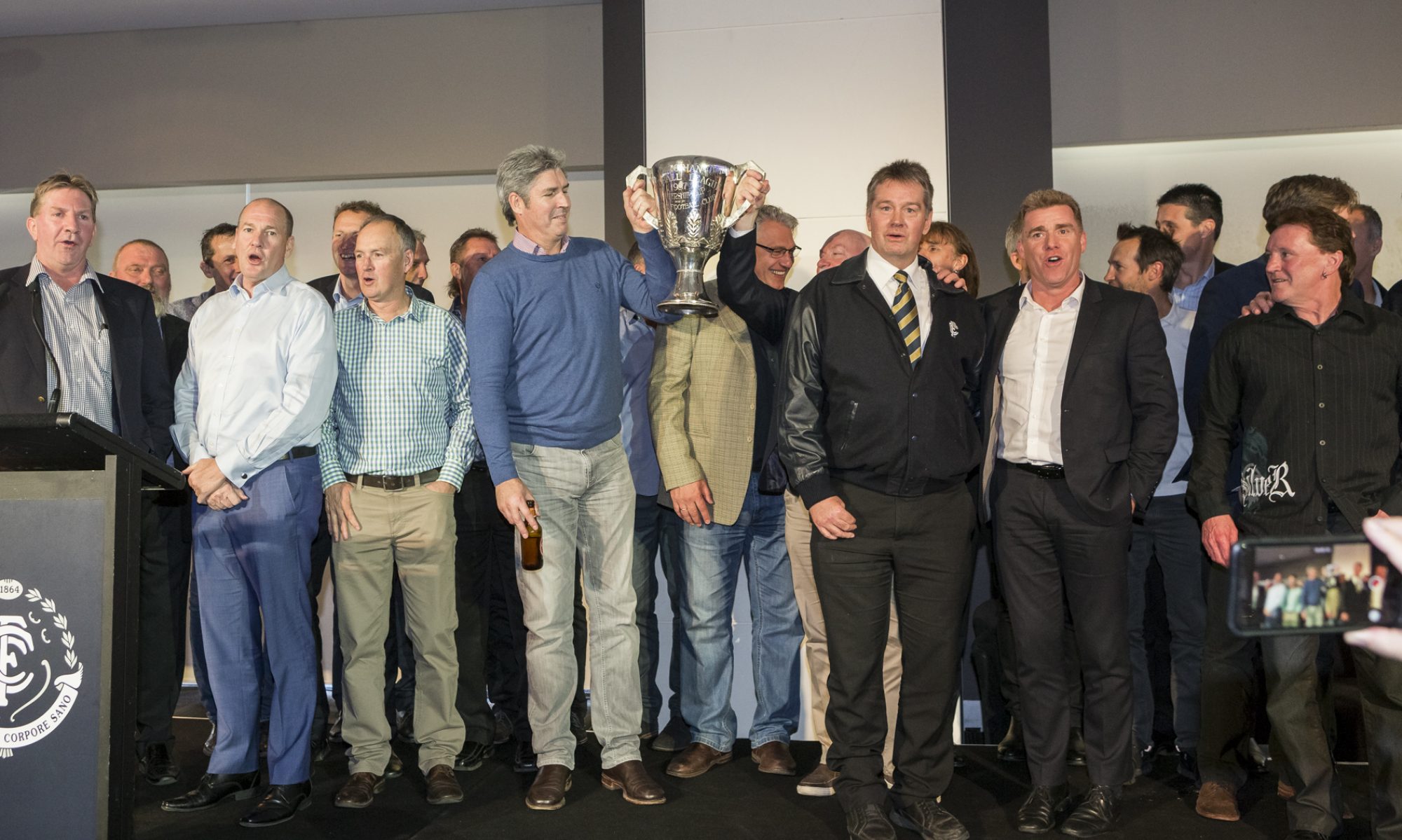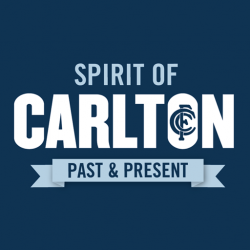Marc Pittonet has a newfound connection with a Carlton triple premiership player.

WHEN Carlton ruckman Mark Pittonet readies himself for the 2023 finals campaign he’ll do so in the knowledge that he’ll be upholding the tradition set by a three-time club premiership great of almost 120 years past with whom he has a newfound connection.
Pittonet, who tonight chests the banner for his 50th Carlton game, recently discovered that his partner of two and a half years Elise Franetic is the maternal great granddaughter of ‘Ted’ Kennedy – one of 11 players to have famously featured in each of the Club’s hat-trick of Grand Final victories of 1906, ’07 and ’08 under the watch of the legendary Secretary/Coach Jack Worrall.
“I knew that my partner Elise’s great grandfather played for Carlton, but I didn’t realise how good he was. Knowing what I know now, it’s made me wonder: ‘Had I been listening? How did I miss all this?’,” Pittonet said.
“Elise reckons she told me about Ted Kennedy a while ago and that I brushed it off thinking that he might have only played one game. Then on a visit to her grandparents’ house a couple of weeks ago, they mentioned that they had a bit of stuff on Ted and I asked if I could have a look. I then realised he was a great figure in Carlton history.
“I’ve always known that Elise’s granddad was a diehard Carlton supporter. Now I know why. Elise herself was an Essendon supporter, but she’s now a converted Carlton fan.”
Born to Scottish migrant parents in Parkville in 1877, Edwin Page Kennedy chased the leather for St Jude’s in his early football life, before accepting an invitation to take part in a trial match with Essendon. In no time Kennedy found his niche in the ‘Same Olds’ senior team, but injury cost him his place in its 1901 Grand Final victory over Collingwood – and though he played in the 1902 Grand Final contest, the Magpies turned the tables and won the flag.
The following year, Kennedy severed ties with Essendon after 43 games and joined Carlton on Worrall’s recommendation. This would prove a masterstroke on Worrall’s behalf as Kennedy set foot on Princes Park with a point to prove.

Centreline stars George Bruce, Rod McGregor and Edwin ‘Ted’ Kennedy.
Ted Kennedy, Carlton player No.163, lined up in the opening round of the 1904 season, against Fitzroy at Princes Park. The old dark Navy Blues were on the end of a frightful 94-point thumping on that Autumn Saturday afternoon and would lose to the same team in the 1904 Grand Final.
But Carlton, under Worrall, was on the rise.
The following year, Ted’s younger brother Jim (later Sir James) Kennedy joined him at Princes Park – but his 23-game Carlton career would be overshadowed by his post League years as a chartered accountant, Mayor of Brighton and State Minister for Transport, whose overall service to community was rewarded with a knighthood.
As a fleet-of-foot wingman, Kennedy, in tandem with Rod McGregor and George Bruce, formed part of the most acclaimed centrelines ever to take the field. Though injury deprived McGregor his place in the 1907 Grand Final victory, Kennedy and Bruce were there for the premiership three-peat – the 1906 Grand Final victory over Fitzroy, the ’07 win over South Melbourne and the ’08 triumph at Essendon’s expense.
Kennedy, McGregor and Bruce took their places in the Carlton 18 which met South Melbourne in the 1909 Grand Final – coincidentally the earliest known VFL game to survive on film – and cruelly fell two points adrift of a fourth flag on the trot.
That game would be Kennedy’s 109th and last at Carlton – and after nine seasons with two clubs, he’d participated in six Grand Finals.
Having served as Carlton Players Delegate in 1908, Kennedy accepted the role of Vice-President in his final year as a player – the same year the club committee presented him with a cheque and silver kettle (and the players a dinner set) in recognition of his marriage to Gertrude Lewin.
Kennedy served as Carlton Vice-President through to the end of 1913. He died at the age of 70 in July 1948 – 10 months after the Blues’ Fred Stafford sunk Essendon by a point with his trusty snap in the dying seconds of the 1947 Grand Final.
Pittonet’s historic football connection does not begin and end with Ted Kennedy. The Blues’ big man also revealed that his own maternal great grandfather Frank Gibson represented Fitzroy in the ruck through 63 games between 1928 and ’32 – a truism that has piqued the 27 year-old’s interest in the game’s rich history and his own League lineage.
“I’ve known about my connection with Frank Gibson for years but never really talked about it,” Pittonet said.
“I’m not sure if it’s a fable, but I was told as a kid that Frank originally played as a ruck-rover who brought about a change in the rule – that only ruckmen could compete at the centre bounce because he used to run in and grab the ball before it hit the deck. Whether that’s true or not I have no idea – but I’m going to run with that.”















